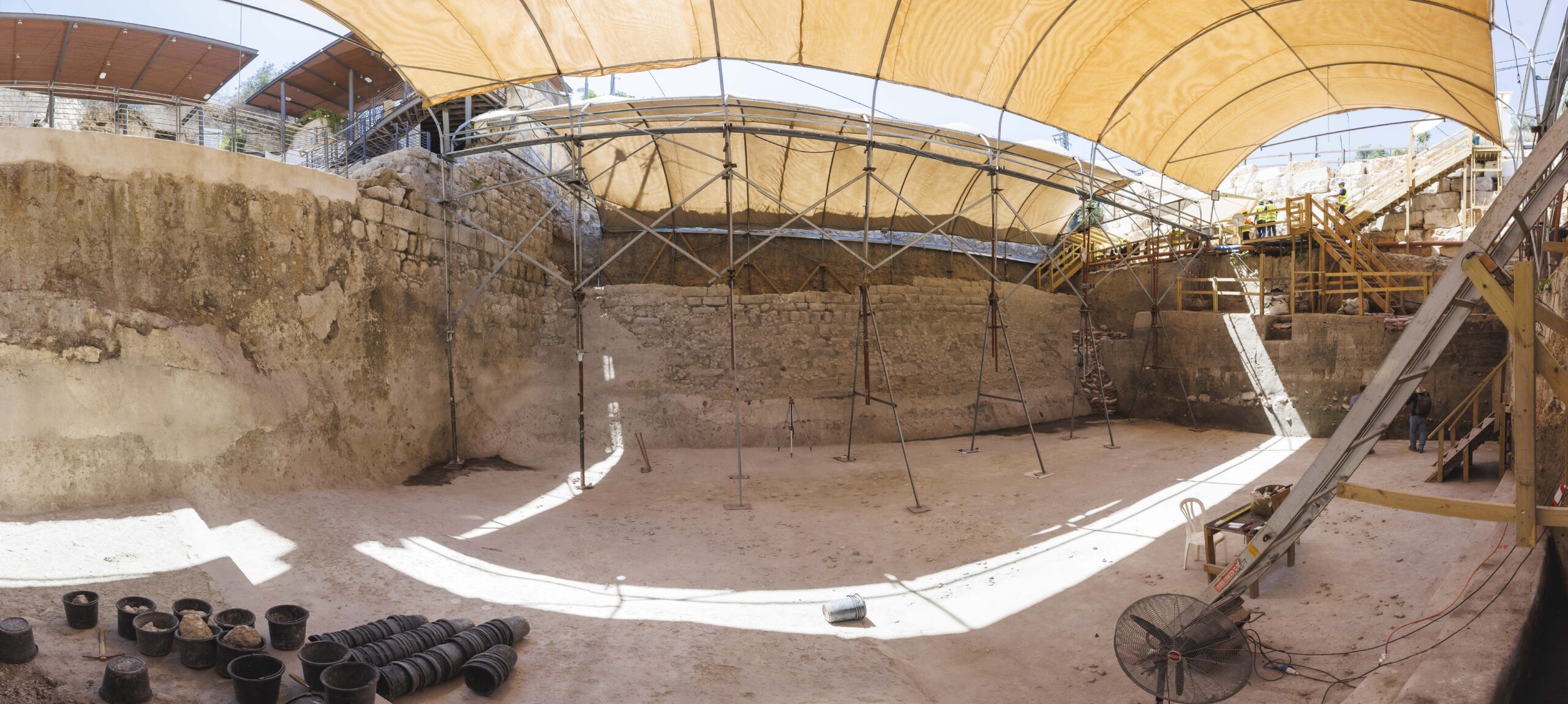A groundbreaking archaeological discovery in the City of David has revealed the largest dam ever uncovered in ancient Israel, shedding new light on the ingenuity of the Kingdom of Judah nearly three millennia ago. Excavated in the Siloam Pool area of the City of David National Park, the monumental structure has now been scientifically dated to the reign of Kings Joash or Amaziah of Judah, around 805–795 BCE. Researchers suggest that its construction may have been a creative response to a climate crisis that afflicted the region 2,800 years ago.
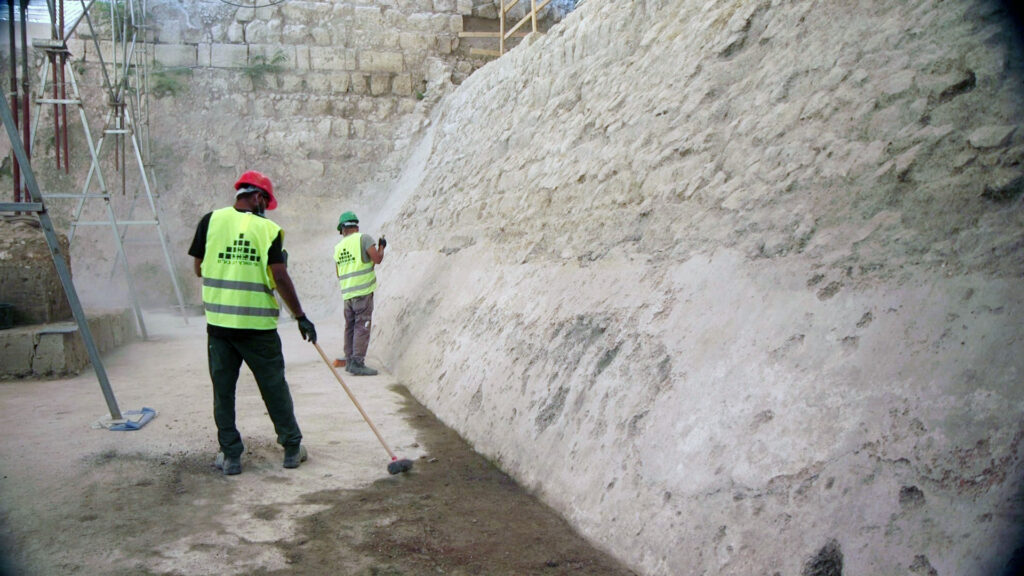
The dam wall from the days of Joash or Amaziah, kings of Judah. Photo: Emil Aladjem, Israel Antiquities Authority
The study, conducted jointly by the Israel Antiquities Authority and the Weizmann Institute of Science, was published Monday in the prestigious journal PNAS and will be formally presented at the upcoming “City of David Studies” conference in early September.
“This is the largest dam ever discovered in Israel and the earliest one ever found in Jerusalem,” excavation directors Dr. Nahshon Szanton, Itamar Berko, and Dr. Filip Vukosavović of the Israel Antiquities Authority announced. “Its dimensions are remarkable: about 12 meters high, over 8 meters wide, and the uncovered length reaches 21 meters – continuing beyond the limits of the current excavation. The dam was designed to collect waters from the Gihon Spring as well as floodwaters flowing down the main valley of ancient Jerusalem (the historical Tyropoeon Valley) to the Kidron Stream, providing a dual solution for both water shortages and flash floods.”
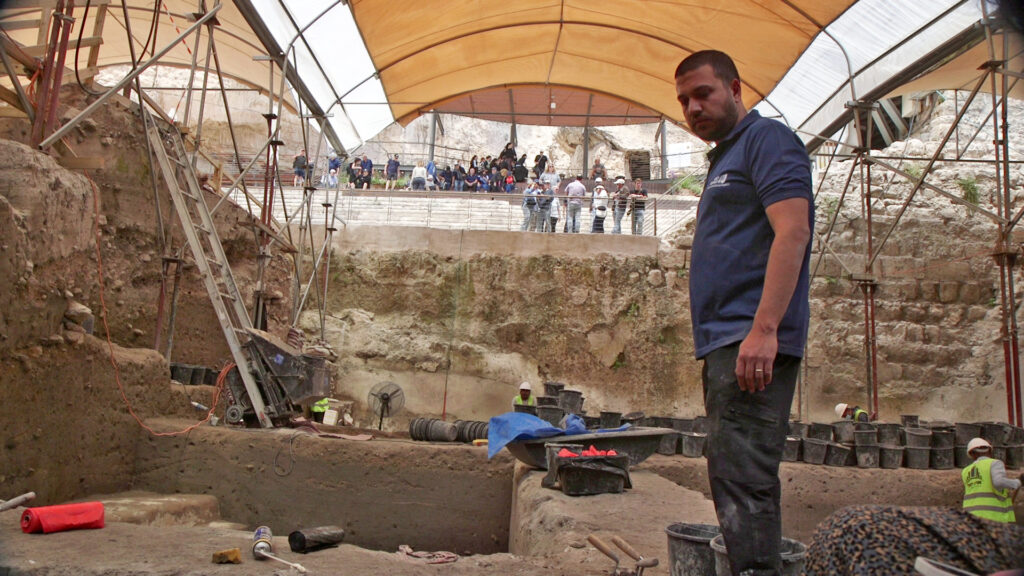
Israel Antiquities Authority excavation in the City of David. Photo: Emil Aladjem, Israel Antiquities Authority
Itamar Berko emphasized the historical importance of the find: “Thanks to highly precise scientific dating, this is the first time it is possible to point with certainty to a structure that formed the basis for the construction of the Siloam Pool, which until now we knew only from the Bible and historical sources.”
The research team, led by Dr. Johanna Regev and Prof. Elisabetta Boaretto of the Weizmann Institute, used advanced micro-archaeological methods and extremely high-precision radiocarbon dating to pinpoint the construction date. “Short-lived twigs and branches embedded in the dam’s construction mortar provided a clear date at the end of the 9th century BCE, with extraordinary resolution of only about 10 years – a rare achievement when dating ancient finds,” the researchers explained. “To complete the climatic reconstruction, we integrated this dating with existing climate data from Dead Sea cores, from Soreq Cave, and from solar activity records influencing the formation of certain chemical elements. All the data pointed to a period of low rainfall in the Land of Israel, interspersed with short and intense storms that could cause flooding. It follows that the establishment of such large-scale water systems was a direct response to climate change and arid conditions that included flash floods.”
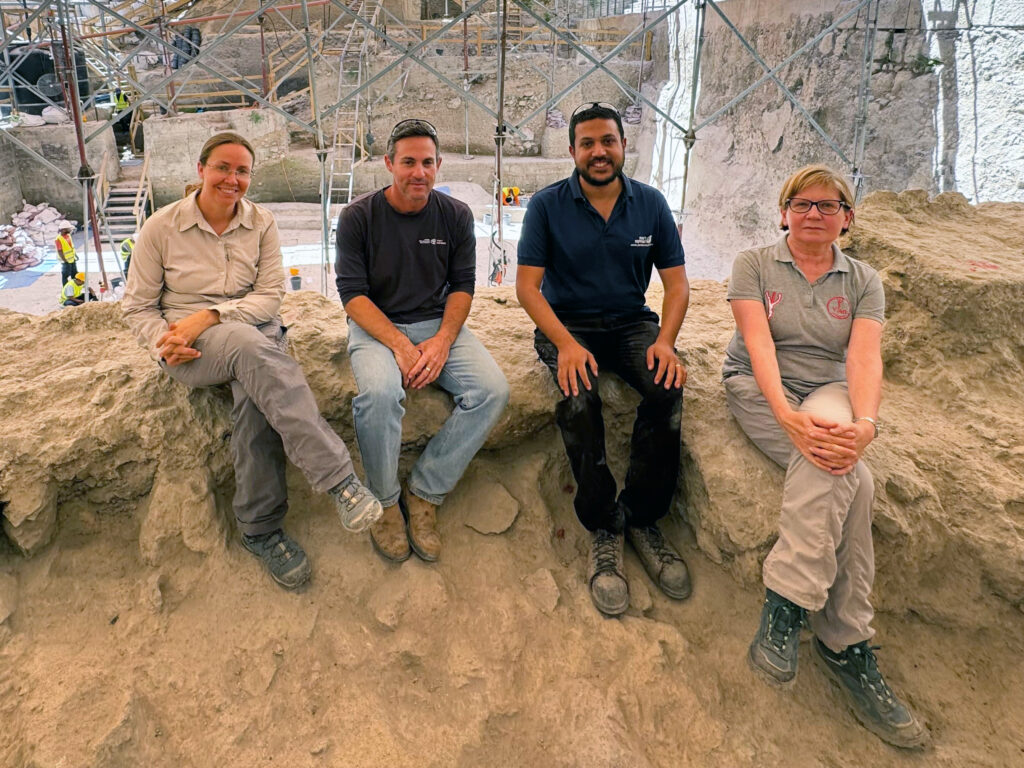
Researchers of the Israel Antiquities Authority and the Weizmann Institute at the Pool of Siloam in the City of David. From right: Prof. Elisabetta Boaretto, Itamar Berko, Dr. Nahshon Szanton, and Dr. Johanna Regev. Photo: Reut Vilf, City of David Spokesperson’s Office
This newly uncovered dam joins two other sophisticated waterworks from the same era found in the City of David: a massive tower that protected the Gihon Spring and a system that channeled its waters into the Siloam Pool. Together, they demonstrate that Jerusalem in the late 9th century BCE was a city of advanced engineering and strategic planning, a hub capable of sustaining a growing population and enduring environmental challenges.
The Siloam Pool itself holds deep biblical resonance. Centuries later, it would be the site where Jesus healed a man blind from birth, as recorded in the Gospel of John: “Go, wash in the Pool of Siloam (which means Sent). So he went and washed and came back seeing” (John 9:7). For pilgrims in the First Temple period, it served as a place of ritual purification before ascending to the Temple Mount. Its existence is rooted in the lifeblood of Jerusalem, tied to the Gihon Spring and safeguarded by monumental constructions like the newly revealed dam.
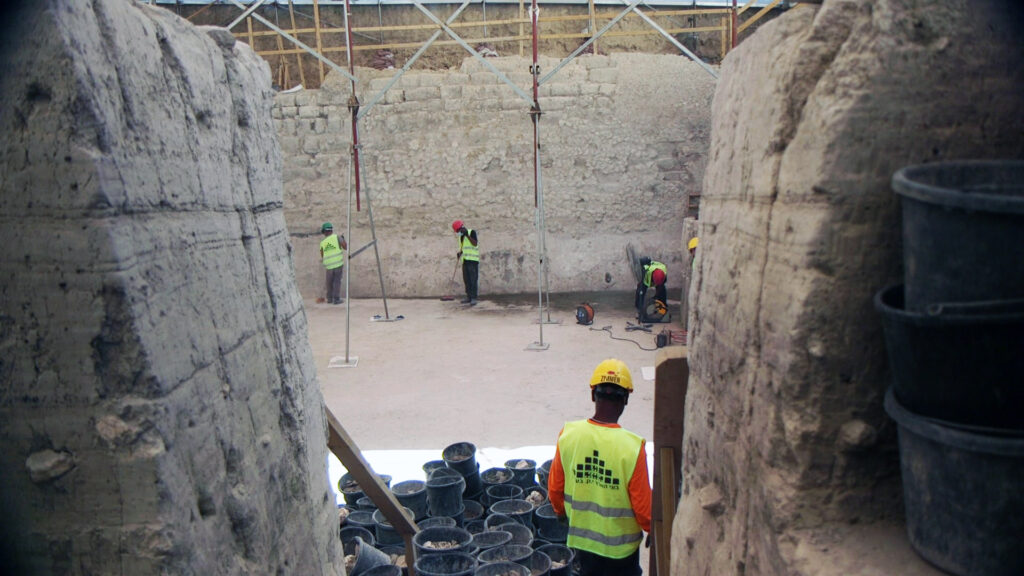
Israel Antiquities Authority excavation in the City of David. Opposite – the dam wall. Photo: Emil Aladjem, Israel Antiquities Authority
The dating of the dam to the reigns of Kings Joash or Amaziah further embeds the find in the biblical narrative. Joash, who reigned for forty years in Jerusalem, is remembered for restoring the Temple: “All the money that is brought into the house of the Lord… let them repair the damages of the house” (2 Kings 12:5). His son Amaziah initially “did what was right in the sight of the Lord” (2 Kings 14:3) and strengthened Judah’s power, though his reign ended in downfall and assassination. The dam’s construction during their rule reflects a kingdom at its height, both devout and resourceful, meeting the dual demands of faith and survival.
“This massive royal construction project influenced the city’s development, particularly its southern and western parts – including Mount Zion – which relied on the waters of the Siloam Pool,” said Dr. Szanton.
Eli Escusido, Director of the Israel Antiquities Authority, hailed the discovery as “one of the most impressive and significant First Temple-period remains in Jerusalem, preserved to an extraordinary degree. The revealed dam is awe-inspiring and opens new avenues of research. The discovery of the dam and the Siloam Pool in the City of David is the result of perseverance, professionalism, and archaeological determination. In recent years, Jerusalem has been revealed more than ever before, with all its periods, layers, and cultures – and many surprises still await us.”
Heritage Minister Rabbi Amichai Eliyahu echoed this sentiment: “The exposure of the largest dam ever found in Israel, in the heart of ancient Jerusalem, is tangible evidence of the strength of the Kingdom of Judah and the creativity of its kings in dealing with natural and environmental challenges. Already 2,800 years ago, the residents of Jerusalem found sophisticated ways to apply outstanding engineering ingenuity and devise creative solutions to a severe climate crisis. The combination of the exact sciences with archaeological research sheds new and indisputable light on our nation’s history in the days of the First Temple.”
The findings will be presented in September at the 26th City of David Studies Conference under the title “The Lost Pool – The Enigma of Siloam,” promising further revelations about the ancient city that once stood as the heart of the Kingdom of Judah.



